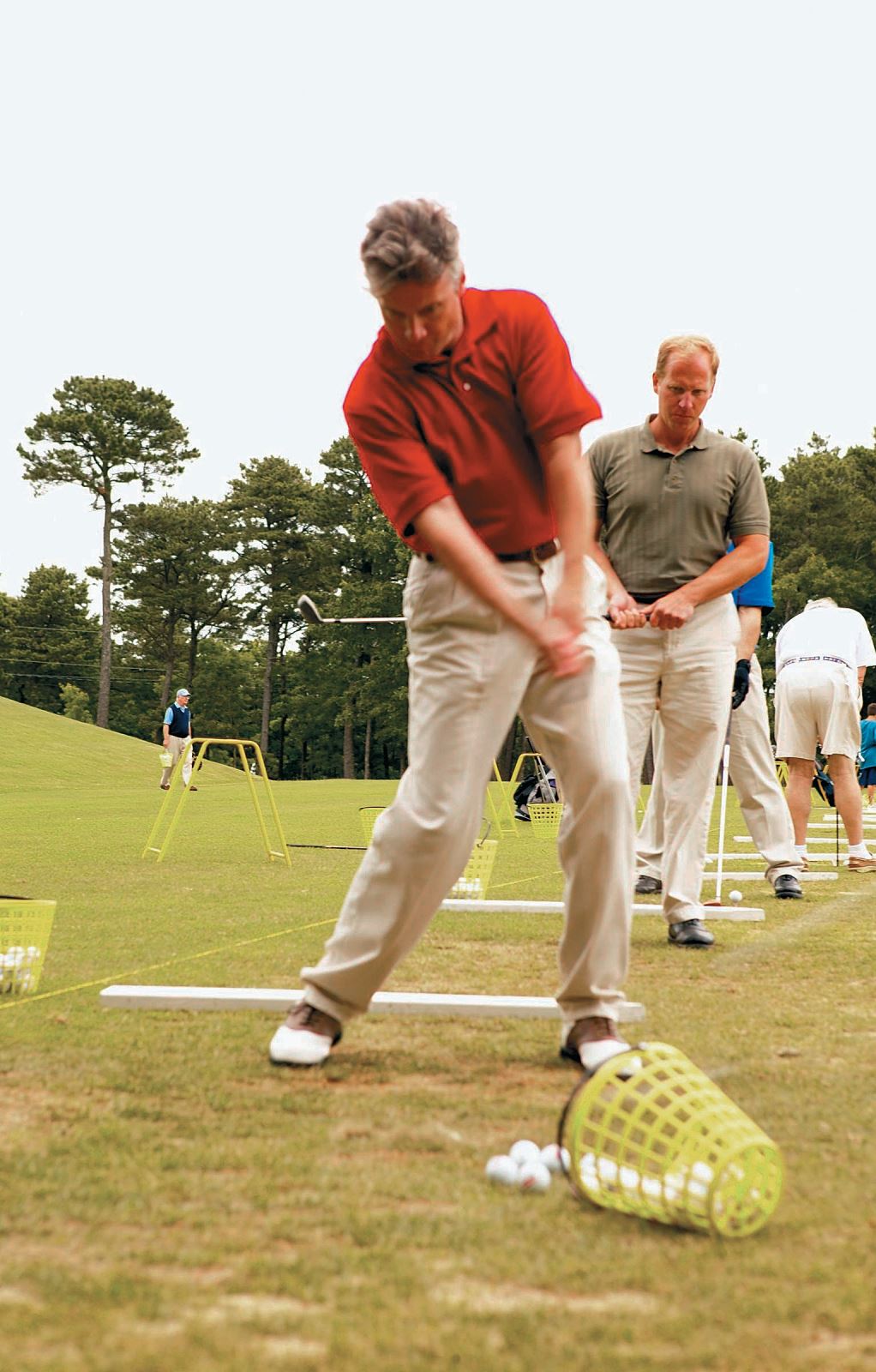 “Keep your elbow in, legs straight, a slight bend in the back and turn your hips.”
“Keep your elbow in, legs straight, a slight bend in the back and turn your hips.”
On any given driving range at any given time, you can overhear multiple lessons on golf from a variety of people … and most are not what you’d call “trained and certified” PGA professionals.
“Look at your target in the sense of ‘parallel tracks’ of a train. Your eyes are looking down one line of tracks; your ball flight travels the other line of tracks. That’s why your ball doesn’t end up where you aim.”
Just the other day I was at a range where a “self-professed” expert was conducting some private lessons. Naturally, since he wasn’t “technically” a PGA trained and certified professional, he was quick to point out, “Although I’m not a professional, you need to relax your arms and swing more inside out. Don’t chop at the ball, hit through it. Keep your balance. You’re bending your elbow. Tilt your head. Feel the club as an extension of your arms. Stay quiet with your legs. Now, I’m not a professional, but it’s obvious that you need to just relax and swing normal.”
The more I listened, the more his words would echo, “I’m not a golf professional but you need to do ….”
Now there’s nothing wrong for friends to offer friends suggestions on how to improve their game. And the driving range is by far the best place to make suggestions. But if someone is really interested in getting better, then why are they listening to some 18-handicap hack who “knows what to do, but just sometimes loses the concentration during execution.”
Meanwhile, trained and certified PGA professionals are available to work with individuals for rather reasonable rates. And the best part about a PGA professional is that his training has taught him that there is no one quick fix to everyone’s game. Each individual who plays the game of golf does it for different reasons.
Some may want to develop a game that is very competitive, while others are just looking for a way to get around the course a dozen or so times a year without embarrassing themselves or killing someone. It’s the PGA professional that is trained to help each person find “his/ her” game to fit “his/her” circumstance.
“The golf magazines say you need to see your shot before you hit your shot. So I need you to visualize your ball sailing out over the 250 marker.”
So the ball dribbles toward the 100 marker that’s on the right side of the driving range.
“You didn’t visualize well enough. Really focus on seeing your ball fly long and straight.”
Perhaps Mr. I’m-Not-A-Golf-Pro-Or-Anything should first try to visualize that he’s trying to instruct a total moron, because anyone with half a brain wouldn’t be wasting time listening to a hack.
What was tragic about the entire lesson was that Mr. I’m-Not-A-Golf-Pro-Or- Anything had another friend lined up for a lesson right after the first clown. You have to wonder if he also stands inside a doctor’s waiting room and offers free medical advice with a simple disclaimer, “I’m not a brain surgeon or anything … but I think you need to get on these drugs and try to keep your feet elevated and your right elbow straight.”
Perhaps you have a friend who just wants to be helpful. And sometimes a tip here or there is a good thing. Just remember that not all advice is necessarily pertinent. In fact, much of it is total BS. So keep in mind, you get what you pay for. Now try to balance your weight on the balls of your feet and make a complete shoulder turn.